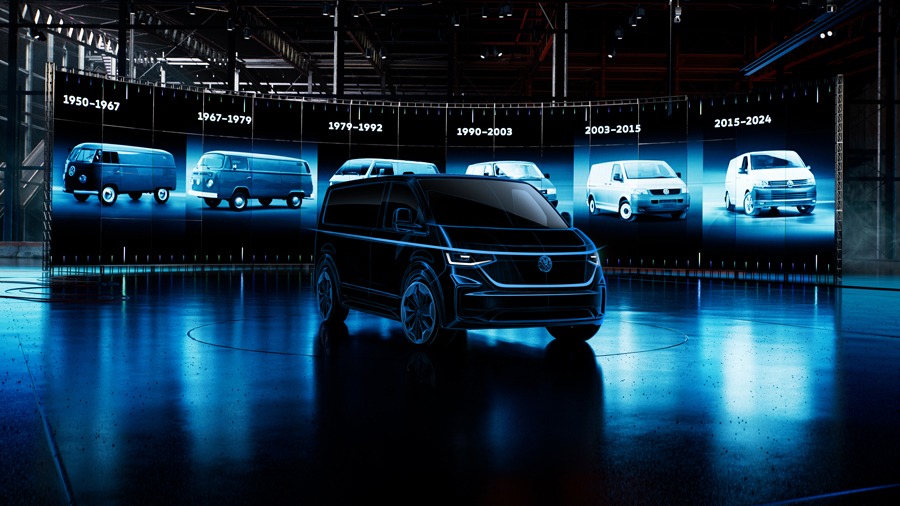Volkswagen Commercial Vehicles is now presenting the first design details of its new Transporter generation. “We are transferring the DNA of our icon into modern times with the completely new Transporter,” explains Albert Kirzinger, Chief Designer of the Volkswagen Commercial Vehicles brand. Kirzinger continues: “The details of the seventh Bulli generation pick up the characteristic design features of its six predecessors and give them a new interpretation. This has a tradition – every new Volkswagen Transporter has always represented a new visual beginning, a stylistic bridge between a long history, the present and the future. This is precisely what has kept this product line updated for over eight decades, making it the most successful van series in its class in the world.” Pre-sales of the new Transporter have already started in Europe at net prices from 36,780 euros – market launch is set to take place in the first quarter of 2025.
Bulli DNA: “One second is all it takes to immediately recognise the Transporter – which has been redesigned from the first to last millimetre – as the successor to the T6.1 and as a member of the Bulli family,” says Albert Kirzinger. The Chief Designer continues: “The design consistently follows the iconic Bulli DNA. This is already evident in the main body, which has the characteristic contour for the product line below the side windows – we call it the Bulli line. This unique DNA can be found in all areas of the exterior design and also makes the new Transporter the original in its class.” The design of the new Transporter in detail:
Front: The T5 can be seen briefly in the shape of the radiator grille, the T6.1 in the headlights and the T1 in the iconic clarity – but all these features have evolved significantly into a new Volkswagen Transporter appearance. At the same time, the design is also embedded in the current Bulli family’s range. The Chief Designer adds: “The front design of our seventh Transporter immediately makes it clear that it is a member of the Bulli family and complements the Multivan and ID. Buzz duo.”
Silhouette: The side view of the Transporter, which is between 5,050 mm and 5,450 mm long, shows the design clarity typical of a Bulli. “As with the T6.1, we have extended the upper contour of the headlights as a line into the sides. This continues all the way to the rear and creates a pronounced linear curvature above it – the Bulli line. This line separates the upper and lower areas of the body and is a tribute to the T1,” says Kirzinger. The range of 16-, 17- and 19-inch Transporter wheel rims has also been redesigned. Particularly striking is the 19-inch Indianapolis alloy wheel with its diamond-cut rim flange as well as six black spokes and inner surfaces. Optimally accessible once again is the fuel filler flap integrated in the area of the B-pillar of the diesel and plug-in hybrid versions, as on the T6.1 and large Crafter. The charging socket flap of the models with plug-in hybrid and all-electric drive is located under the right-hand headlight.
Rear: The rear end of the seventh Volkswagen Transporter has a homogeneous design and thus has the clear and characteristic features of a Bulli. The commercial vehicle will once again be available with a tailgate and rear wing doors. Although completely redesigned and technically revamped, the striking shape of the tail lights with LED dots towards the sides creates a stylistic bridge to the T5. “With a horizontal line below the rear window and a black handle strip above the number plate, we form a smooth horizontal strip between the C-shaped tail light clusters, which we also use here to emphasise the iconic clarity of the new Transporter,” says Albert Kirzinger. He continues: “As always with a Volkswagen commercial vehicle, there is no line that is not logical. The described horizontal lines below the rear window and above the handle strip are a good example of this, framing the Volkswagen logo and extending into the tail lights with millimetre precision.” Form thus again always follows function on the seventh Transporter. The tailgate or wing doors are another example: their recess extends far into the bumper, resulting in a low load sill height of only 575 mm to 638 mm (depending on version).










